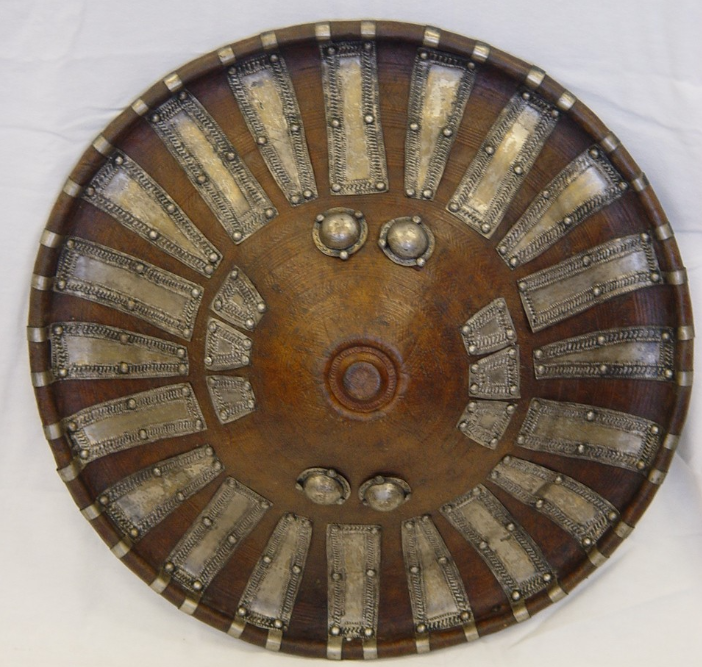What: A processional cross taken by the British Museum’s expert on the expedition, Richard Rivington Holmes
Where: The British Museum, Great Russell St, Bloomsbury, London WC1B 3DG
Provenance: Maqdala referenced at length in the museum’s acquisition notes. This cross used as the main illustration on the museum’s Maqdala collection page.
The catalogue entry reads:
“Processional cross made from brass with a cast hollow shaft. The squared shaft is decorated with a rectangular panel of intricate interlaced designs front and back and tapers to a triangular point. Two squared lower arms extend out from the centre of the shaft to the top. The lower arms are decorated with herring-bone designs and with two finial crosses on the lower edge. The body of the cross is supported in a slot in the top of the shaft and is secured in place with a nail; two further nails set within quatrefoils attach the cross to the lower arms. The diamond shaped body of the cross if formed by a central patée cross with extensively flared arms which join at the corners.
“Front; the flared arms are each decorated and edged with interlacing representations of snakes on a ground of punched circular designs and with a finial cross. The central panel is engraved with, clockwise from left; Saint Michael with striped wings and sword, Jesus holding a scroll or book, Mary, Saint Gabriel, Matthew, John, Luke and Mark [?] all bearded and holding books.Back; the flared arms are edged with scrolled serpentine motifs and decorated with pateé crosses on a ground of punched circular designs, with a finial cross. The uppermost arm has a central cross with Ge’ez inscription. The central panel is engraved with twelve haloed, bearded men representing the Apostles.”
Inscription Translation: “Mary [kin of Abraham]?, Michael, Mary with her son, the cross which he gave to Dirasge, Gabriel, Matthew, John, Luke, [for Aba Matmarqos] ?, Michael”
Acquisition notes: “Richard Rivington Holmes, an assistant in the manuscripts department of The British Museum, had accompanied the expedition as an archaeologist. He acquired a number of objects for the British Museum, including around 300 manuscripts which are now housed in the British Library. In 1868 the Secretary of State for India, Sir Stafford Henry Northcote, 1st Earl of Iddesleigh, donated to The British Museum two further collections of material from Maqdala.”
Details
Acquisition namePrevious owner/ex-collection: Sir Richard Rivington Holmes
Acquisition date: 1868
Date: 1450-1500
Length: 31.5 cm
Width: 21 cm
Depth: 2.5 cm
Museum number: Af1868,1001.19

